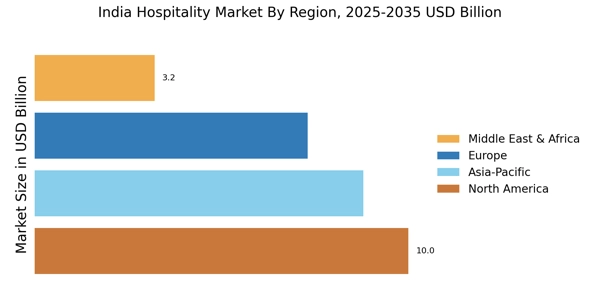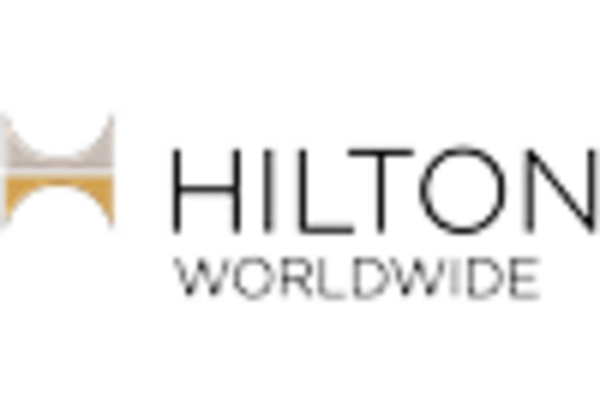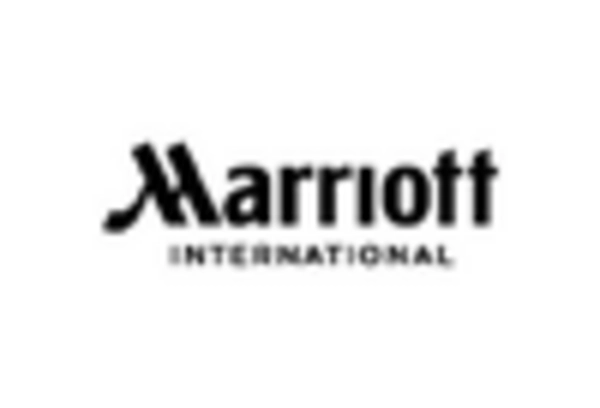Growth of the MICE Segment
The Meetings, Incentives, Conferences, and Exhibitions (MICE) segment is emerging as a crucial driver for the India Hospitality Market. With the increasing number of corporate events and international conferences being hosted in India, the demand for specialized venues and services is on the rise. In 2025, the MICE sector is expected to contribute significantly to the overall hospitality revenue, with estimates suggesting a growth rate of around 15% annually. Major cities like Delhi, Mumbai, and Bengaluru are investing in state-of-the-art convention centers and hotels equipped with modern amenities. This trend not only enhances the appeal of India as a business destination but also encourages the development of ancillary services, thereby creating a more robust hospitality ecosystem.
Emergence of Boutique Hotels
The India Hospitality Market is witnessing a shift towards boutique hotels, which are gaining popularity among travelers seeking unique and personalized experiences. These establishments often reflect local culture and heritage, providing guests with an immersive stay. The boutique hotel segment is projected to grow at a rate of 12% annually, driven by changing consumer preferences and the desire for authenticity. As travelers increasingly prioritize experiences over conventional luxury, boutique hotels are capitalizing on this trend by offering tailored services and distinctive designs. This growth not only diversifies the hospitality landscape but also encourages competition among traditional hotels to innovate and enhance their offerings.
Rising Middle-Class Population
The rising middle-class population in India is a significant driver for the India Hospitality Market. With an estimated 600 million individuals expected to enter the middle class by 2025, there is a growing demand for affordable yet quality accommodation and dining options. This demographic shift is influencing travel patterns, as more families and young professionals are seeking leisure and business travel opportunities. The hospitality industry is responding by expanding mid-range hotel offerings and enhancing service quality to cater to this burgeoning market segment. As disposable incomes rise, the potential for increased spending on travel and hospitality services is likely to create new opportunities for growth within the industry.
Increase in Foreign Tourist Arrivals
The India Hospitality Market is currently experiencing a notable increase in foreign tourist arrivals, which is projected to reach 30 million by 2025. This surge is attributed to India's rich cultural heritage, diverse landscapes, and improved visa policies. The government has implemented measures to enhance the travel experience, such as e-visa facilities and promotional campaigns targeting international markets. As a result, hotels and hospitality services are expanding their offerings to cater to the growing demand. This influx of tourists not only boosts occupancy rates but also stimulates local economies, creating a ripple effect across various sectors. The hospitality industry is likely to adapt by enhancing service quality and diversifying packages to attract a wider range of international visitors.
Investment in Infrastructure Development
Infrastructure development is a pivotal driver for the India Hospitality Market, as it directly impacts accessibility and the overall travel experience. The government is investing heavily in improving transportation networks, including roads, airports, and railways, which facilitates easier access to tourist destinations. By 2025, it is anticipated that several new airports and expressways will be operational, significantly reducing travel time. This enhanced connectivity is likely to attract more domestic and international tourists, thereby increasing demand for hospitality services. Furthermore, improved infrastructure supports the growth of ancillary services, such as restaurants and entertainment venues, creating a more comprehensive hospitality ecosystem.


















Leave a Comment